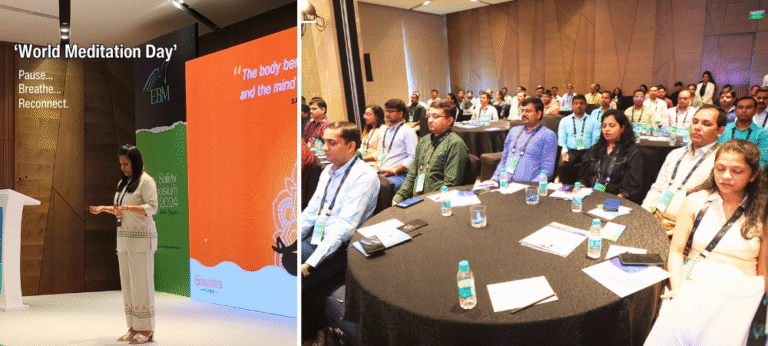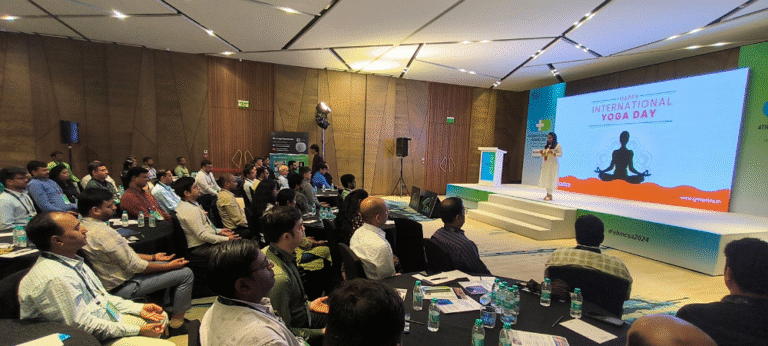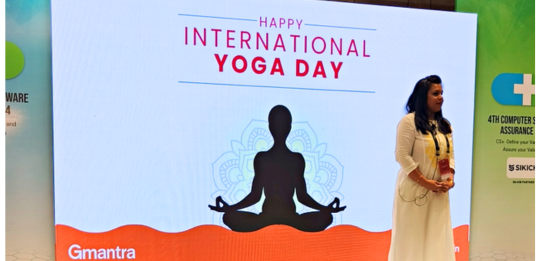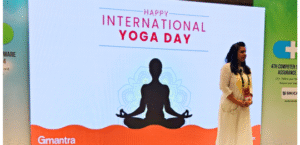A Simple Yet Profound Tool to Anchor, Calm, and Connect
There’s a moment in every Sound Bath I facilitate, right at the beginning, where I invite everyone to take a long, slow exhale through the mouth.
It might sound like a small thing, almost too simple to matter. But in that moment—when a room full of people lets go of their day, their to-do lists, their tension—I feel the collective shift. A softening. A surrender. A signal to the body that it’s safe to arrive here. Now.
That is the power of a longer exhale.
My Personal Anchor
Personally, this breath has become my anchor. My go-to hack.
When I’m feeling overwhelmed—when my mind feels like Mumbai traffic, honking with thoughts and distractions—I come back to this one tool:
A longer exhale through the mouth.
I use it before stepping on stage at an event. I use it when I’ve had a long day, and my nervous system feels overstimulated. I use it in those tiny in-between moments when I need to come home to myself.
Just one mindful breath—in through the nose, slowly out through the mouth, longer than the inhale—and I feel a shift. It grounds me. It reminds me: I’m here. I’m okay.
What’s Happening in the Body?
The power of the exhale lies in its impact on the nervous system.
When we inhale, our body gears up. The heart rate slightly quickens, and we activate the sympathetic nervous system—the one responsible for alertness and energy. This is useful when we need to move, do, or protect ourselves.
But it’s during the exhale that the body relaxes. A longer exhale activates the parasympathetic nervous system—specifically, the vagus nerve, which plays a key role in calming the body and restoring a sense of safety. The heart rate slows. Muscles release tension. The breath becomes softer. The mind clears.
This is the physiology of calm. And we can access it anytime—no tools, no apps, no special settings—just with the breath.
How I Use It in Sound Baths
At the start of every Sound Meditation session, before I play the first tone of the singing bowls or chimes, I guide people to drop into their breath.
But not just any breath—a purposeful, lengthened exhale through the mouth.
It might sound like:
“Inhale gently through the nose… and now exhale slowly through the mouth… as if you’re fogging up a mirror… let it be longer than your inhale… let go.”
This simple cue sets the tone for everything that follows. People settle. The noise inside begins to dim. Their bodies get the message: “You’re safe now.”
And in that stillness, the sounds of the bowls don’t just land on the ears—they resonate through the entire nervous system. The breath prepares them to receive.
In the Corporate World: Stress Management & Box Breathing
I also bring this practice into my corporate training programs—especially those focused on Stress Management and Mindfulness at Work.
In high-pressure environments, employees often operate in a constant state of fight-or-flight. Tension becomes normal. Shallow breathing becomes unconscious. Over time, this takes a toll on both the mind and the body.
That’s why I often introduce Box Breathing in my sessions—a technique that uses equal counts for inhale, hold, exhale, and hold again. But I tweak it:
I intentionally lengthen the exhale part.
For example:
Inhale for 4 – Hold for 4 – Exhale for 6 – Hold for 2
Why? Because that longer exhale is the key that unlocks calm. It slows the inner rush. It helps people move from stress mode into a more centered space—where they can think clearly, respond wisely, and feel more in control.
Time and again, participants tell me things like:
“That breathing technique stayed with me all day.”
“I did that longer exhale before a tough client call and felt surprisingly calm.”
It’s such a simple practice—but it works.
The Mindfulness Connection
Mindfulness isn’t just about sitting cross-legged and meditating. It’s about becoming aware—of the moment, of your mind, of your breath.
The longer exhale is a doorway into present-moment awareness.
When we focus on exhaling slowly, we naturally become more mindful. The mind pauses its chatter. The body gets permission to be still. We tune in, instead of checking out.
This is why I believe the longer exhale isn’t just a calming tool—it’s a mindfulness anchor.
It doesn’t require 20 minutes of silence. It requires just one intentional breath.
When to Use This in Daily Life
You don’t need to be in a Sound Bath or a workshop to practice this. Here are a few moments when a longer exhale can be especially helpful:
- Before an important meeting or presentation
- When you’re feeling anxious or overwhelmed
- During a traffic jam or commute
- Before sleep, to help your body wind down
- In moments of conflict or tension
- Before starting a creative task, to clear the mind
How to Practice: A Simple Guide
Here’s a quick breathing practice you can try now:
- Sit comfortably. Close your eyes if you like.
- Inhale through the nose for a count of 4.
- Exhale slowly through the mouth for a count of 6 or 8.
- Pause gently before the next inhale.
- Repeat for 1-2 minutes. Notice the shift.
Even just a few rounds of this can create a noticeable change in how you feel.
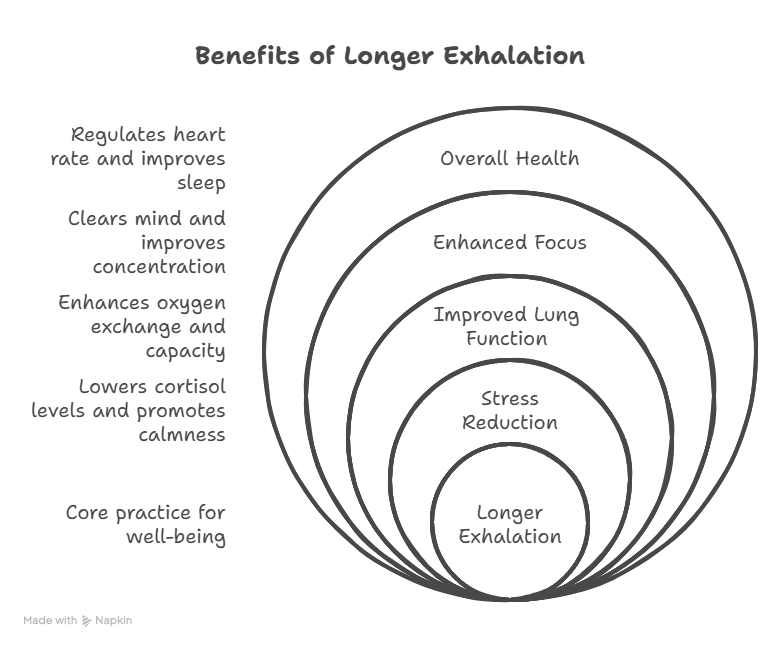
In a world that constantly asks us to do more, be more, respond faster—the breath reminds us that we are human. That we are enough. That we can pause.
And often, all it takes is a longer exhale.
So the next time you feel overwhelmed, scattered, or tense, try this:
Breathe in gently… and breathe out slowly, through the mouth… a little longer.
Let it be your soft landing. Your grounding point. Your return.
Because sometimes, the most profound shifts begin with the simplest breath.





